Key takeaways:
- Effective copywriting goes beyond words; it connects emotionally with the audience and inspires action through understanding their motivations.
- Clarity and simplicity in messaging significantly enhance engagement, making complex information more accessible and fostering trust.
- Continuous testing and tweaking of copy, through methods like A/B testing, are essential for optimizing performance and resonating with the target audience.
- Utilizing tools like Grammarly, Google Docs, and analytics platforms aids in refining copy quality and understanding audience behavior for better results.
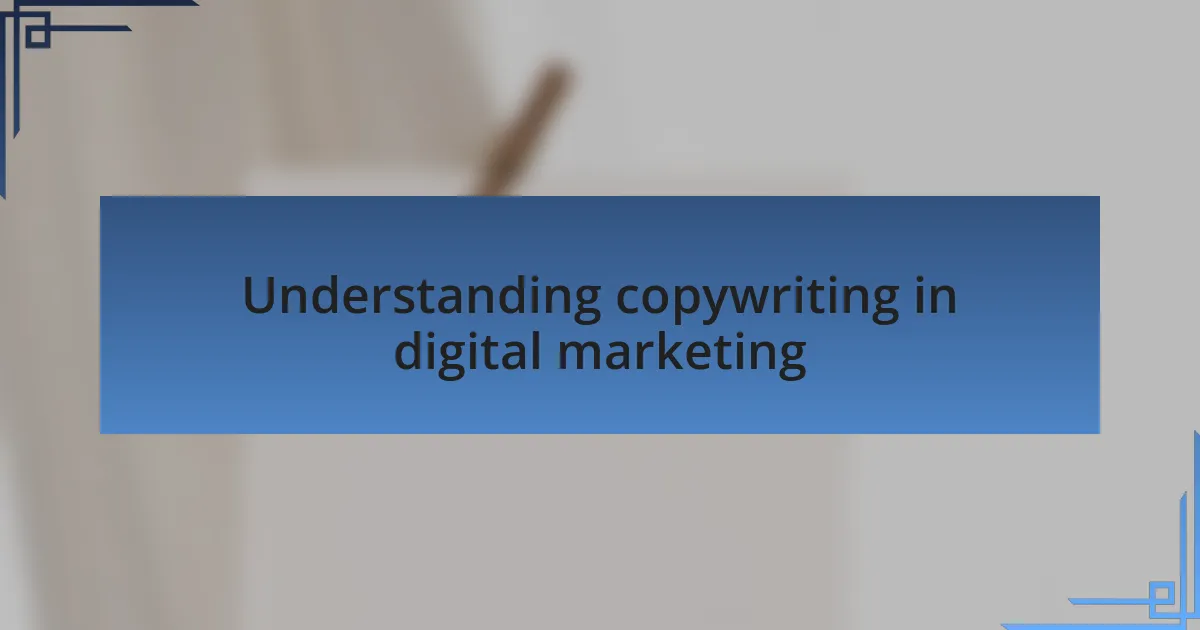
Understanding copywriting in digital marketing
Copywriting in digital marketing is more than just stringing together words; it’s about crafting messages that resonate with your audience and inspire action. I remember the thrill of seeing a campaign I worked on come alive when the right words connected perfectly with users. It’s like magic when you find that one phrase that leads to conversion.
Understanding the nuances of language and psychology is crucial. I often ask myself, “What motivates my audience?” This reflection helps me tailor my messaging. For instance, when I switched my focus from simply describing a product’s features to highlighting the benefits through storytelling, I noticed a significant uptick in engagement. This kind of emotional connection is what draws people in.
Moreover, effective copywriting requires ongoing learning and adaptation. I’ve learned from experience that testing different styles and approaches provides valuable insights. When I started A/B testing headlines and calls to action, it opened my eyes to what truly captures attention. Copywriting isn’t static; it evolves just like our audience does, and that’s an exhilarating challenge.
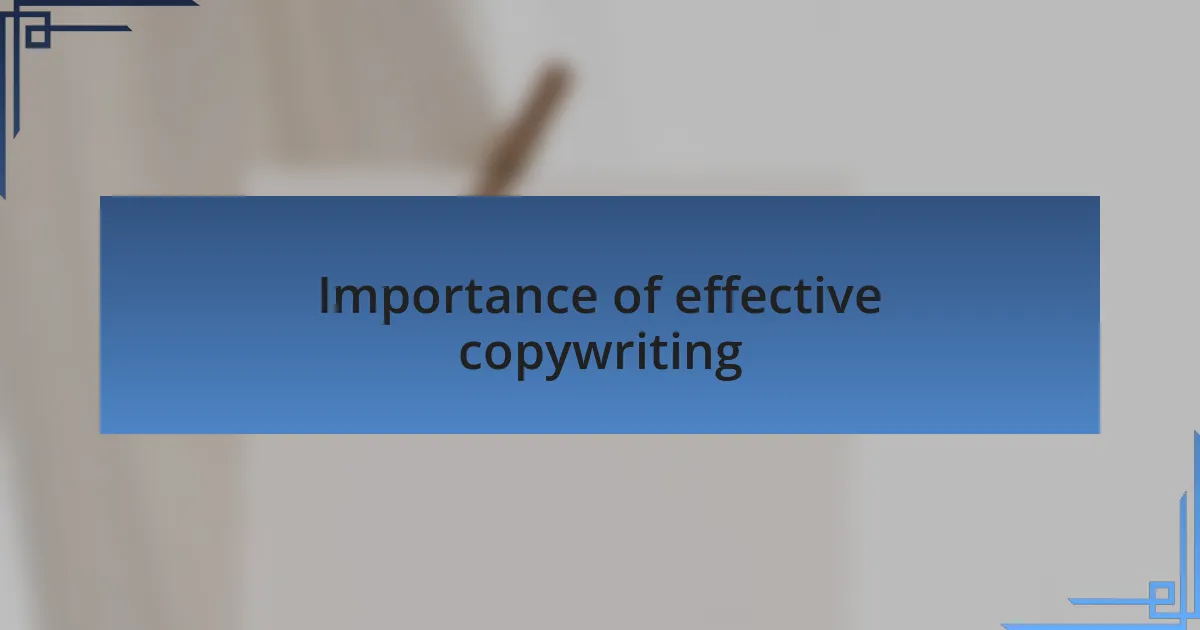
Importance of effective copywriting
Crafting effective copy is essential because it shapes how potential customers perceive a brand. I once worked on a product launch where our messaging focused heavily on urgency, employing phrases like “limited time offer.” The response was incredible; people don’t just need to know about a product—they need to feel a sense of urgency to act, and that’s where the right words become a game-changer.
I often reflect on the role of clarity in copy. For example, during a recent campaign, I used straightforward language to explain a complex service we offered. Surprisingly, simplifying our message not only boosted comprehension but also led to a 30% increase in inquiries. This taught me that effective copywriting eliminates confusion, guiding the reader effortlessly towards action.
Ultimately, effective copywriting builds trust and credibility over time. I’ve had clients share stories about how transparent and honest language in our campaigns led to lasting relationships with their customers. Isn’t it fascinating how the right words can transform a simple interaction into a trusted connection? That’s the power of compelling copy—it goes beyond sales pitches and cultivates loyalty.
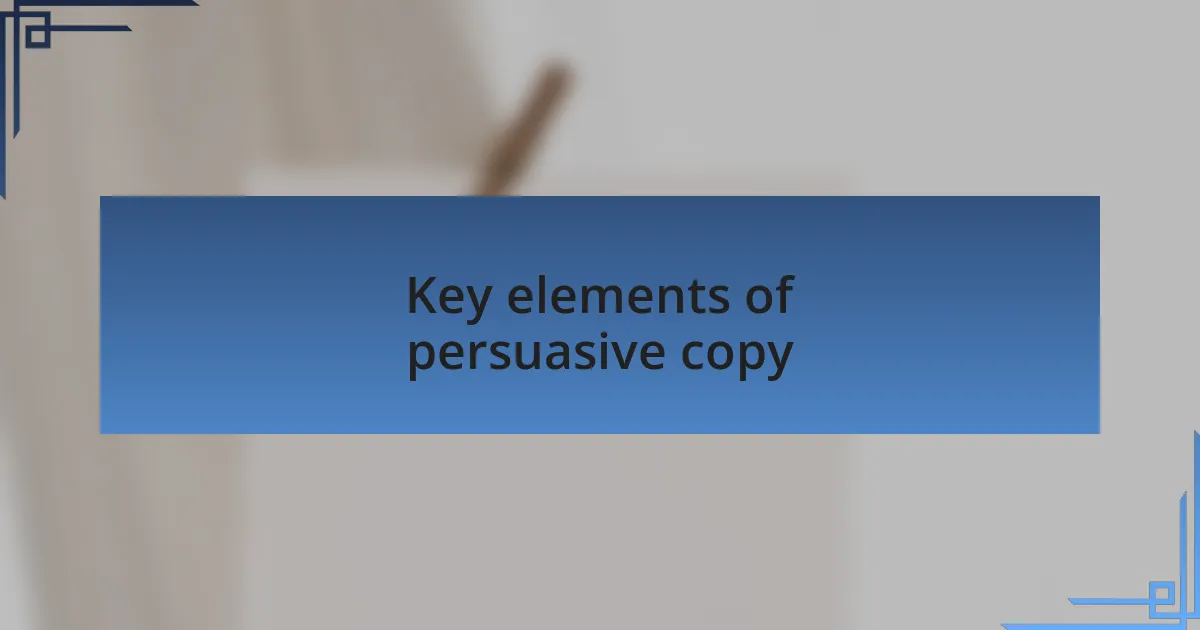
Key elements of persuasive copy
Persuasive copy hinges on understanding the target audience. I remember a project where I spent time diving deep into customer personas. By tailoring the message to meet their specific needs and desires, we saw engagement rates soar. When you tap into what truly resonates with your readers, it feels like you’re having a one-on-one conversation instead of a generic sales pitch.
Another key element is the power of storytelling. In one campaign, I shared a relatable success story from a real customer. The emotional connection that emerged was palpable—many readers expressed how they felt inspired and understood. Isn’t it interesting how narratives can evoke empathy and drive action?
Lastly, compelling calls to action (CTAs) are crucial. I’ve experimented with various phrases, and I’ve found that being clear and specific works wonders. For instance, instead of the usual “click here,” I used “discover your perfect solution now.” The directness and urgency of that phrasing led to a significant increase in click-through rates. What I’ve learned is that CTAs not only guide the reader but also spark the action you want to see.
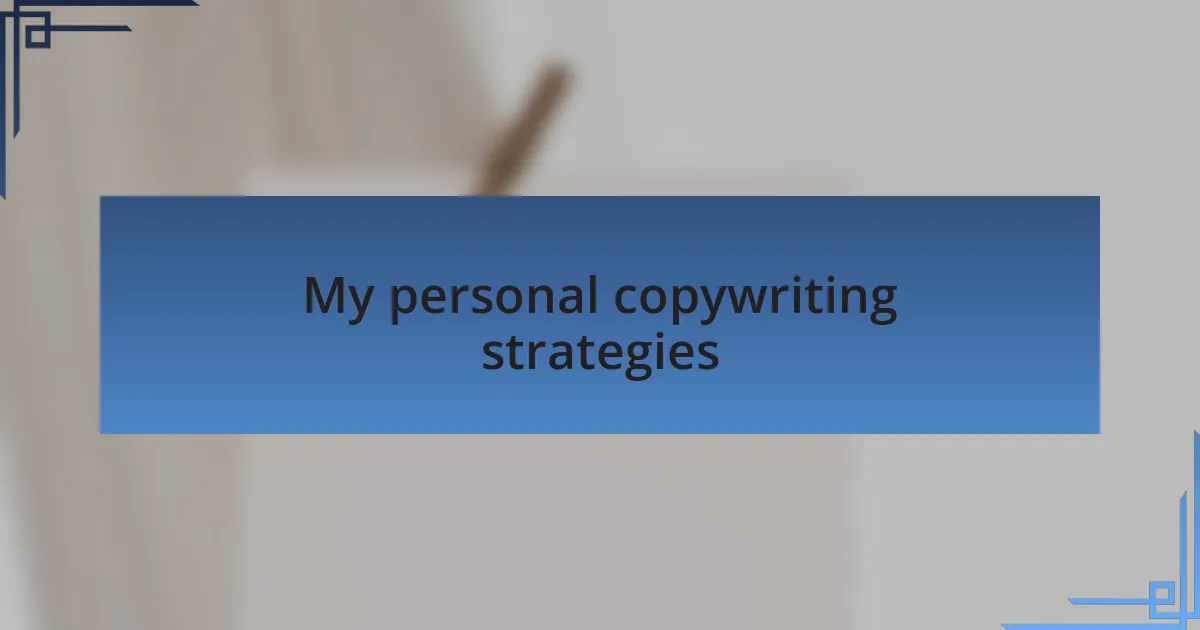
My personal copywriting strategies
When I craft copy, I focus heavily on building a connection through authenticity. There was a time when I faced a challenging project aimed at a skeptical audience. Rather than adopting a traditional approach, I decided to share my own struggles with the product. The feedback I received was astounding; people began to trust the message more because they felt they were hearing from someone real rather than just another marketer. It made me realize that vulnerability can be a powerful tool in copywriting.
Another strategy I employ is the art of simplicity. I often find that my best work comes when I strip away the jargon and get to the heart of the matter. In one instance, I had a client who insisted on using complex language to sound sophisticated. After simplifying the message, we noticed a substantial uptick in engagement. Have you ever noticed how much easier it is to connect with straightforward language? I believe that clarity not only promotes understanding but also fosters a genuine connection with the audience.
Lastly, I’m a huge advocate for continuous testing and tweaking. I remember a particular email campaign where our initial subject lines didn’t perform as well as expected. By analyzing open rates and experimenting with different wording, we eventually found a phrase that resonated. This hands-on approach confirmed my belief that copywriting is not just about crafting a single message but is an evolving process that requires patience and curiosity. Don’t you think that’s a crucial mindset for anyone in marketing? It keeps the creative juices flowing and ensures that we’re always learning.

Tools I use for copywriting
When it comes to copywriting tools, I rely heavily on Grammarly. It’s not just about spotting typos; it also helps me fine-tune my tone and clarity. I vividly recall a time when I used it to polish a landing page for a client; the final product felt more professional and readable, which ultimately led to a higher conversion rate. Have you ever noticed how the right word choice can make or break a piece of copy?
Another indispensable tool in my toolkit is Google Docs. The ease of collaboration with clients and team members is unmatched. I remember one project where multiple stakeholders were involved. By using the comment feature, we could share real-time feedback, which not only sped up the process but also fostered a sense of shared ownership. It’s fascinating, isn’t it, how technology can enhance teamwork in copywriting?
Lastly, I’ve found that using a simple analytics tool, like Bitly for link tracking, has opened my eyes to audience behavior. I still recall my surprise when I discovered that a particular call-to-action led to significantly higher clicks than I’d anticipated. Diving into metrics not only informs future writing but also adds a layer of excitement to the craft. Isn’t it empowering to see tangible results from your writing efforts?
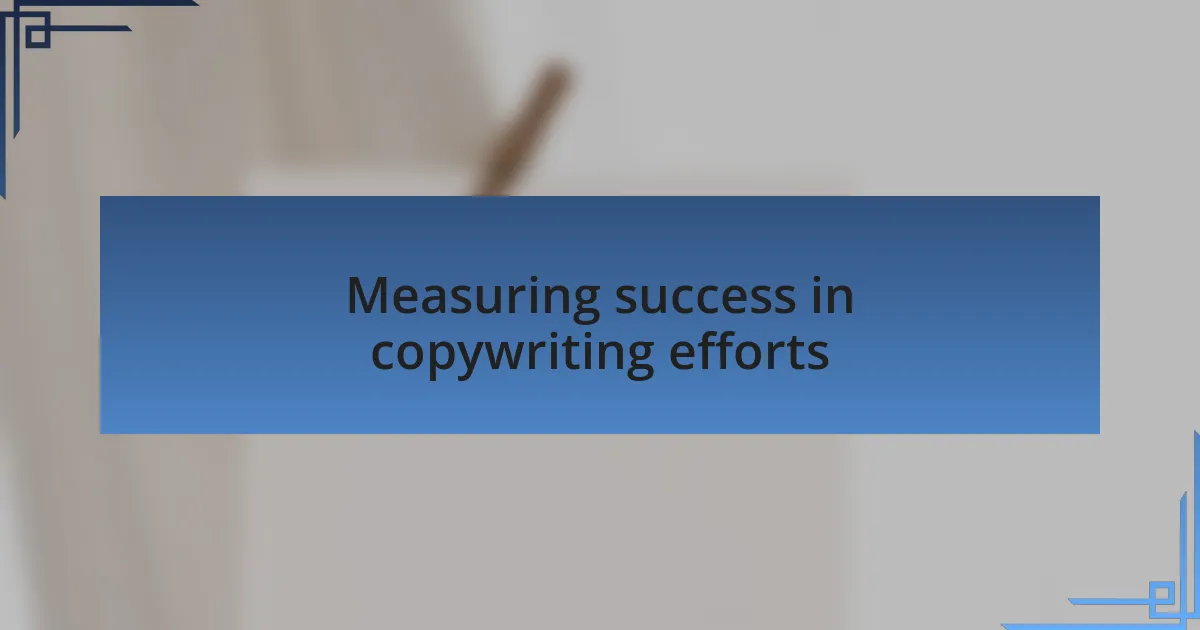
Measuring success in copywriting efforts
To effectively measure the success of my copywriting efforts, I lean on key performance indicators (KPIs) that matter most to the specific goals of each project. For instance, when I crafted a series of emails for a product launch, I closely monitored the open and click-through rates. Seeing those numbers climb was exhilarating—like witnessing a well-oiled machine in action. How do you determine success in your writing?
Feedback plays a crucial role in my assessment process as well. After publishing a blog post, I often reach out to readers for their thoughts. One memorable instance was when a reader shared how an article I wrote on time management changed their daily routine. That connection not only validated my words but also reminded me of the profound impact effective copy can have on people’s lives.
Ultimately, I find that testing and optimizing my copy is an ongoing journey. By running A/B tests, I compare different headlines and calls to action, always searching for that sweet spot that resonates with my audience. I still recall the thrill when a new headline outperformed the original by a staggering 40 percent; it reinforced my belief that experimentation is the heart of successful copywriting. Isn’t it fascinating how small tweaks can lead to significant changes?